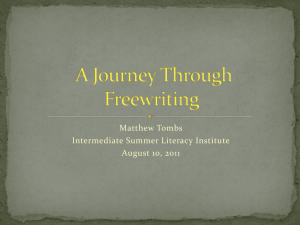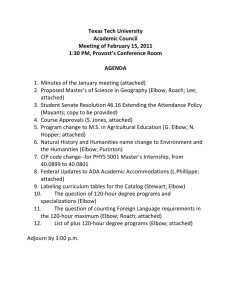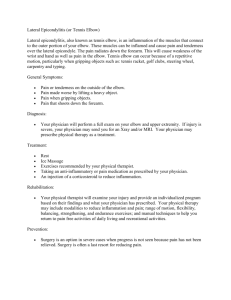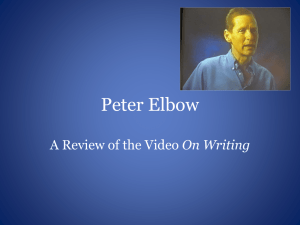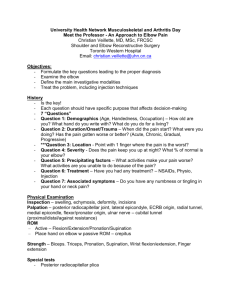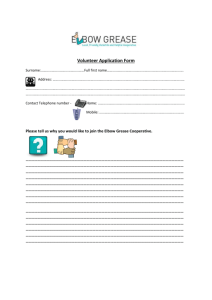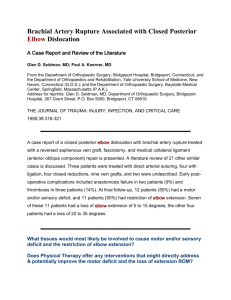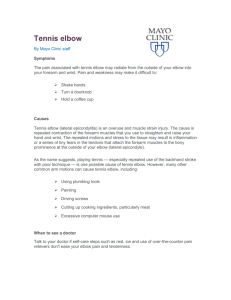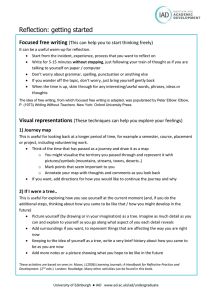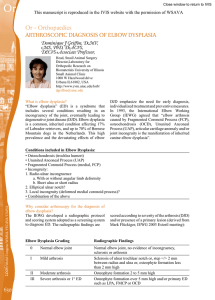Peter Elbow On Writing
advertisement
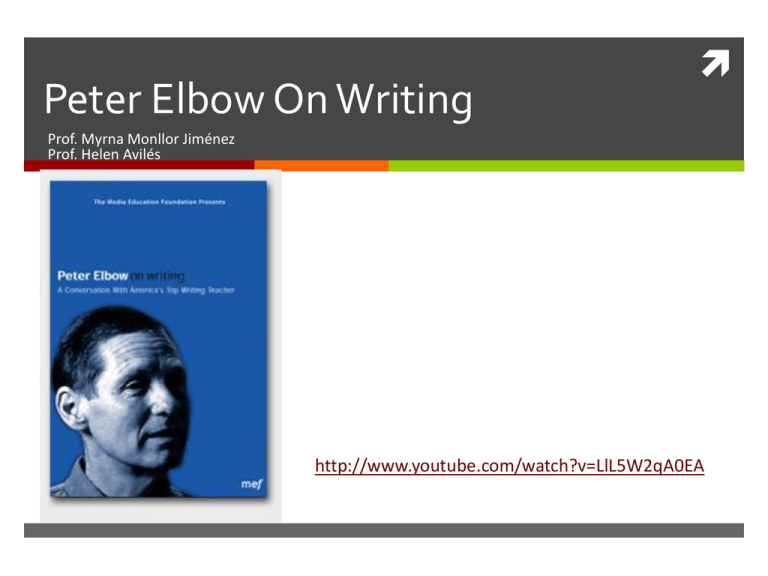
Peter Elbow On Writing Prof. Myrna Monllor Jiménez Prof. Helen Avilés http://www.youtube.com/watch?v=LlL5W2qA0EA Peter Elbow: Publications Writing as giving in Resistance Compliance Resisting the conventions e. e. cummings Elbow’s Movie of the Mind “Movie of the Mind” http://myweb.wvnet.edu/~jelkins/writeshop/writeshop/movie.html Writing Experiences Free Writing Journal Writing Think Pieces Cut-andPaste Technique Essays Portfolios Peter Elbow advocates students writing with power believes students need to feel safe in the classroom, in order for them to take risks proposes building a foundation to provide the safety needed to write self-esteem strong sense of self praise Elbow’s Four Levels of Audience Relationship Private Writing Writing that people share, but listeners don’t respond to Writing that receives a positive response or feedback Writing which receives criticism Four Levels of Audience Relationship Sharing of writing can be done in groups or pairs, or individually with the teacher At the level of positive response, both peers and the teacher can ask questions to help and guide the writer Students also need to share at least 3/4 of their writing Elbow’s Grading Contracts Contract establishes that if you do all the writing work the teacher assigned, you get will get a B With the collaboration of his students, Elbow establishes what A writing is Excellence is the key to getting an A To get an A or a B Students need to: do a lot of writing provide evidence of drafting, peer editing, revising they need to make substantive changes so that they prove their skill at revising Voice “When people read their writing out loud, they can tell immediately when something doesn't work. They'll stumble, they'll change a sentence, they'll say, "wait a minute, let me say that differently" because it's not speakable. They learn an essential fact about voice, but they learn it with no teaching. They learn it with the feel of their mouth and the sound of their ear.” Peter Elbow Other Requirements “perplexity of writing” and “movement of thinking” considers grammar and spelling as part of the final draft’s evaluation Not Graded Low Stake Assignments get students to keep up with the assigned reading/work every week Help students become active learners because they get involved in the subject matter of the course Help students find their own language to explain what is being discussed Serve as a scaffold (Vigotsky) for high stakes writing Provides the teacher with a better understanding of the student’s writing progress Low Stake Writing: Benefit for Teachers Provides input about students’ progress High Stakes Writing Commenting on Students’ Work Extensive research has shown that when students read our comments, they frequently misunderstand what we have written there is no right or best way to respond to student writing ask for a short piece of “process writing” or “writer’s log” or “cover letter” with any major assignment where the students will explain how they got their ideas, which parts were more difficult, what parts were easy, what their intention was, what changes they made Responding to Writing A rubric helps to make comments that refer directly to what the assignment required Read the whole text before commenting Focus on two or three problems at the most Frame comments in a positive way What Elbow does? Comments as a reader, not an editor Grading 1. Marks paper lightly with pencil, never ink 2. Writes comments on a separate paper Responding Asks students to respond to his comments by writing for 5 minutes On Grading Hard Grading • Demanding • Specific • Movement of thinking • Demonstrate learning Think Pieces/Freewriting • Fewer categories • Check/Check +, Check - • No penalty for in-class writing • Mistake free for hard grading Creating a Positive Writing Environment Pat Schneider’s Writing Alone 5 Essential Affirmations that Elbow agrees with “ 1. Everyone has a strong, unique voice. 2. Everyone is born with creative genius. 3. Writing as an art form belongs to all people, regardless of economic class or educational level. 4. The teaching of craft can be done without damage to a writer’s original voice or artistic self-esteem. 5. A writer is someone who writes. “ http://www.amherstwriters.com/ElbwIntr.html
